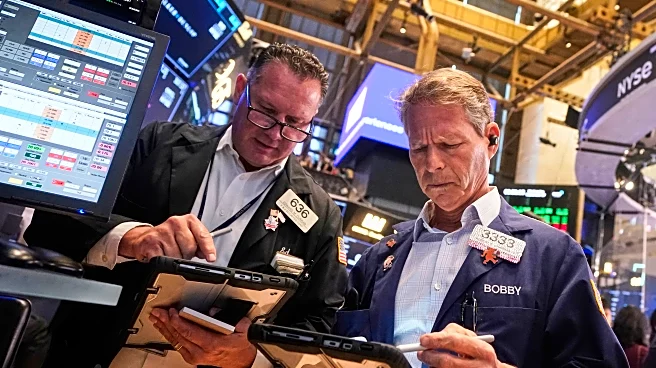What's Happening?
Stronger-than-expected U.S. economic data, including a 3.8% GDP growth rate in the second quarter and a decrease in weekly jobless claims, is complicating Wall Street's expectations for further Federal Reserve rate cuts. Despite the September rate cut, the resilience of the economy, coupled with inflation hovering near 3%, is leading to higher Treasury yields and impacting rate-sensitive sectors like technology. Investors remain hopeful for another rate cut in October, with CME's FedWatch barometer indicating an 87.7% chance of a 25 basis point reduction.
Why It's Important?
The robust economic data challenges the narrative of rapid rate cuts, which investors had anticipated to stimulate borrowing and economic activity. The Federal Reserve's cautious approach reflects the dual mandate of controlling inflation and supporting employment. With inflation above the Fed's 2% target, the path to sustained rate cuts is narrow, and the central bank may adopt a meeting-to-meeting approach to policy adjustments. This uncertainty affects market sentiment and investment strategies, particularly in sectors sensitive to interest rate changes.
What's Next?
The Federal Reserve will continue to assess incoming data and the evolving economic outlook to determine the appropriate policy stance. While further rate cuts are possible, the Fed's commitment to its inflation and employment goals suggests a measured approach. Investors will closely watch upcoming economic indicators and Fed communications for signals on future monetary policy actions.












